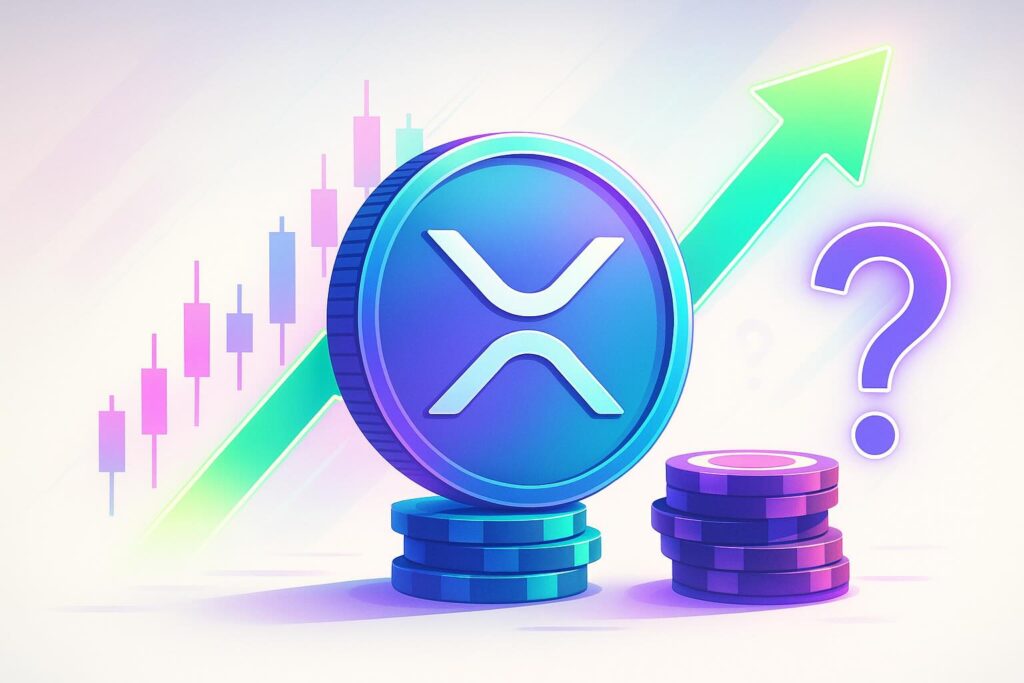In the rapidly evolving world of cryptocurrencies, market dynamics can shift dramatically, capturing the attention of investors and financial analysts alike. Such is the case with XRP, which recently experienced a notable price surge. This rise is not merely speculative; it is backed by substantial institutional interest and regulatory developments. As we delve into this phenomenon, we’ll explore the catalysts behind XRP’s upward trajectory and assess the broader implications for crypto investments.
XRP’s Surge: Institutional Interest and Market Implications
The Role of ETF Applications in XRP’s Price Increase
The recent 6% rise in XRP’s value is primarily fueled by significant developments in the Exchange Traded Fund (ETF) space. Financial powerhouses such as Canary Capital, Bitwise, Franklin Templeton, and 21Shares have filed amended S-1 forms with the Securities and Exchange Commission (SEC) to launch spot XRP ETFs. Collectively managing hundreds of billions of dollars, these firms signal a profound institutional interest in integrating XRP into mainstream financial products. Their coordinated filing strategy, adhering to standardized listing procedures, aims to streamline the approval process for these ETFs, suggesting a medium-term inevitability for their acceptance.
For the market, the implications are profound:
– XRP’s recognition as a credible digital asset on par with Bitcoin and Ethereum.
– An opening to structural demand through institutional portfolios.
– A straightforward narrative: “If ETFs are approved, investor capital will flow.”
As a result, XRP’s trading volumes surged, reflecting market anticipation of this transformative potential, with prices rising significantly in the hours following these announcements.
DTCC and the Legitimization of Crypto ETFs
The Depository Trust & Clearing Corporation (DTCC), a cornerstone of Wall Street’s financial infrastructure, plays a pivotal role in this evolving narrative. By incorporating several crypto ETFs, including those for XRP, into its clearing and settlement systems, DTCC is facilitating seamless integration into existing financial workflows for pension funds, family offices, and traditional asset managers.
This development impacts XRP on multiple fronts:
– Crypto ETFs gain acceptance as a standard part of financial operations.
– If XRP ETFs receive approval, they can be quickly deployed by highly regulated entities.
Consequently, the market’s response has been robust, with XRP breaking through previous resistance levels, buoyed by increased trading activity and a shift in its perceived status among alternative coins.
Investment Strategies: Engaging with XRP’s Price Movement
Faced with a notable price increase, investors are naturally curious whether to invest in XRP’s momentum. The fundamental drivers are compelling:
– XRP’s renewed appeal post-SEC disputes.
– Alignment with prominent institutional players.
– An influential ETF narrative.
Nevertheless, technical patterns indicate caution:
– Potential for rapid profit-taking by early movers.
– Possible corrections of 10–20% to balance temporary market excesses.
– Heightened volatility due to derivative trading.
A balanced investment approach might involve:
– Avoiding entry during sharp price spikes.
– Opting for staggered purchases at support levels rather than making large, singular investments.
– Viewing XRP as a macroeconomic wager on ETF acceptance rather than a short-term gamble.
In essence, the fundamentals support a cautiously optimistic outlook, though timing demands patience and strategic entry points.
PepeNode ($PEPENODE): A High-Risk, High-Reward Venture
While XRP garners attention from institutional investors, PepeNode is making waves with a completely different approach—tapping into the speculative fervor surrounding meme coins. This gamified “mine-to-earn” model allows players to engage without physical mining equipment while incentivizing participation through a hyper-deflationary token economy.
Key characteristics include:
– Up to 70% of tokens spent on node upgrades are permanently burned, reducing supply.
– A significant proportion of pre-sale tokens are allocated for removal from circulation.
– Extremely high staking rewards, sometimes exceeding 1,000% APY.
Token utility extends to:
– Purchasing and enhancing nodes.
– Participating in staking and mining boosts.
– Earning rewards in $PEPENODE, PEPE, FARTCOIN, and other meme coins.
– Driving viral growth through a referral system offering returns from affiliates’ gains.
The pre-sale’s success, raising millions at around $0.001 per token, reflects a strong market appetite for low-entry-price opportunities, despite the speculative nature.
Conclusion: Navigating Investment Decisions in Dynamic Markets
The recent XRP price surge is underpinned by heavyweights filing for ETF authorization and the integration by the DTCC, presenting a credible long-term investment narrative. For investors, this development might warrant gradual exposure to XRP as a strategic bet on spot ETF adoption, enhancing its role in payment systems and financial infrastructures.
Conversely, projects like PepeNode exemplify the market’s speculative extremes—with gamified elements, massive yield potentials, and aggressive token burn strategies. The decision to engage with such initiatives depends heavily on an investor’s risk profile:
– XRP emerges as a macro-ETF play with high volatility yet a promising narrative.
– PepeNode offers a speculative venture akin to a calculated risk, promising substantial returns but carrying potential for total capital loss.
Ultimately, choosing between these options involves balancing potential rewards against the ability to retain objectivity in an inherently volatile environment.
Is XRP’s recent price movement sustainable?
While XRP’s recent price increase is driven by solid institutional interest and potential ETF developments, sustainability depends on regulatory approvals and broader market trends. Investors should monitor ongoing regulatory proceedings and institutional adoption levels.
How do XRP ETFs impact the cryptocurrency market?
Approval of XRP ETFs could significantly enhance XRP’s market position by providing institutional investors with a regulated and familiar investment vehicle. This could lead to increased demand and liquidity, stabilizing and potentially boosting XRP’s market value.
What are the risks associated with investing in PepeNode?
Investing in PepeNode carries substantial risks due to its speculative nature and reliance on meme coin dynamics. While high APYs and token burns can drive interest and short-term gains, market volatility and project sustainability remain significant concerns.

